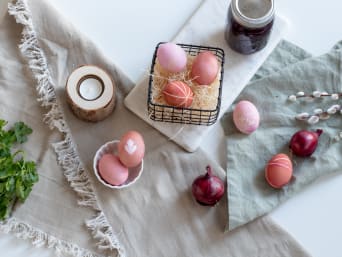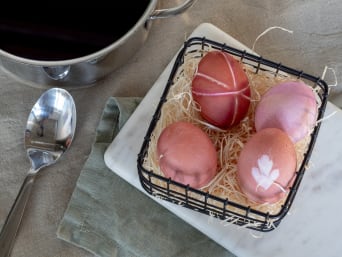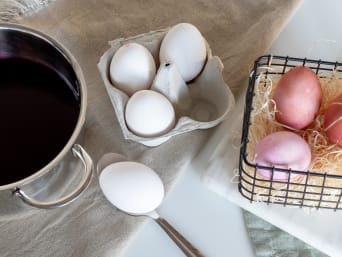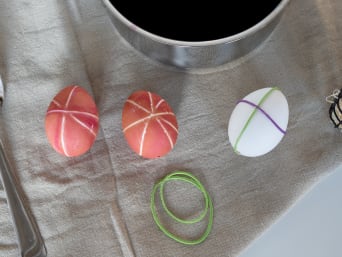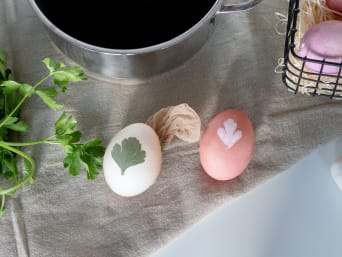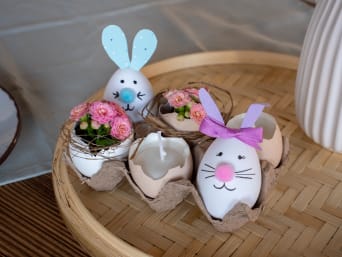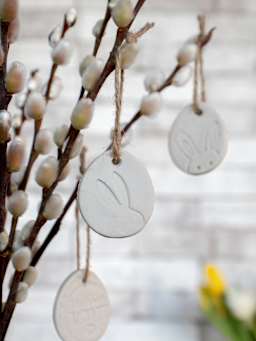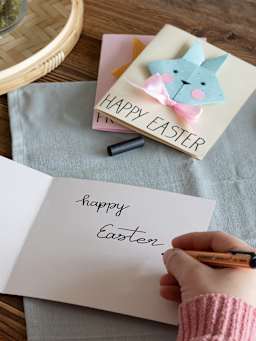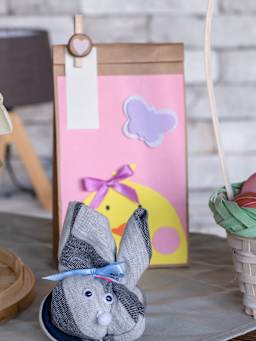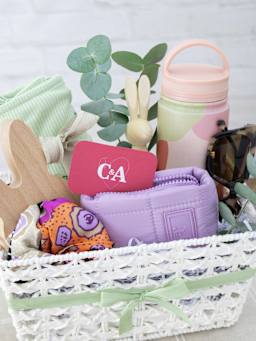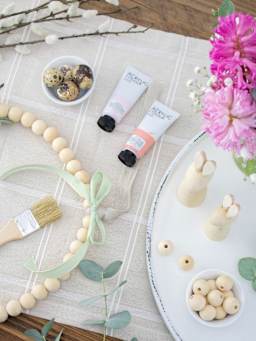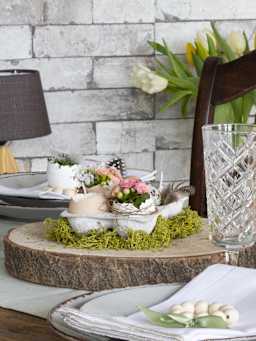Dyeing Easter eggs with natural dyes
Designing, painting, and then hunting for Easter eggs is an integral part of classic Easter traditions. Natural dyes for Easter eggs are safe and environmentally friendly. We will show you how to use natural dyes for dyeing eggs and which foods are best suited for adding some colour to your Easter eggs. We will also provide you with some great Easter egg designs.
Contents
Easter egg decorations: painting, crafting, and designing
Designing Easter eggs – marbling effect
Painting Easter eggs – lines and geometric shapes
Modern Easter eggs – natural patterns
Making Easter egg figures
Dyeing eggs using natural dyes
Many foods have natural dyes that you can use to create wonderfully colourful Easter eggs. Colours such as yellow, orange, green, red, blue and violet can be made from food without much effort.
Here is an overview of which colours can be made using different foods:
Yellow: Turmeric (fresh or powder)
Orange: Oranges, onion skins, carrots
Green: Spinach, nettles, parsley, maté tea
Red: Beetroot, hibiscus tea
Blue: Hibiscus flower tea, fresh red cabbage, blueberries
Violet: Elderberry juice, red onion skins

Use either white or brown eggs depending on which colours you would like to have. White eggs work particularly well with light colours like yellow or green, however, you can also use dark colours. Brown eggs, on the other hand, only work well with darker colours.
Instructions: Using food to dye eggs
1. Start by boilingthe eggs. To make them last longer, we recommend cooking them for at least 10 minutes.
2. Drizzle some vinegar on a kitchen towel and rub the eggs on it. This helps to rub off the expiry date printed on the eggs and it also roughens the outer shell so that the natural dye will stick better.
3. The next step is to make the colouring mixture. To make sure there is enough dye in the mix, use the following ratios for every half litre of water:
Vegetables: 500 g
Powder/spices/tea: 3 tablespoons
Juice: ½ litre
2 handfuls of fruit or vegetable peel or skin
4. Boil the ingredients for about 30 minutes to dissolve the dyes. After that, pour the dye mixture through a sieve and leave it to cool.
5. Now put the eggs into the dye so that they are completely covered. For pastel colours, leave the eggs to infuse for about 2 to 10 minutes, depending on the intensity of the dyes. For really intense colours, leave the eggs to soak in the natural dye for a minimum of 30 minutes.
6. When you are happy with the colour, take your Easter eggs out of the dye and leave them to dry on a piece of kitchen towel.

It is best to use an old enamel pot and old bowls for dyeing eggs. Some dyes stain easily and can be hard to remove.
More alternatives to dying Easter eggs naturally
If you are too busy and don’t have the time to make a dye yourself, there are a few alternatives. Organic egg dye, for example, is made from natural ingredients and it is completely safe. You can find organic Easter egg colours in organic shops, health food shops, pharmacies, or online.
Alternatively, you can use organic food colouring as a dye:
First, boil the eggs for 10 minutes.
Then bring ½ litre of water to the boil and add 4 teaspoons of vinegar and 4 teaspoons of organic food colouring.
Then carefully place the eggs in the water and leave them to soak until you are happy with the colour.
DIY designing & egg painting ideas
Do you want to get creative and make some beautifully coloured eggs? Here are some ideas on making and designing Easter eggs. You can add some variety to your homemade Easter nest and try out some new design ideas.
Designing Easter eggs – marbling effect
Add the food dye ingredients to the pot and do not stir them. This will give them a unique ‘marble’ pattern. As the ingredients cover the eggs, the different colours will touch the egg and leave a fabulous marbled pattern.

You can use some oil to make your dyed Easter eggs have a nice shine.
Painting Easter eggs – lines and geometric shapes
If you prefer a more intricate design, you can use rubber bands, washi tape, or hot glue. Try wrapping elastic bands around the egg before it has been coloured. This will create fine lines that add contrast to the finished egg. Alternatively,you can use a hot glue gun to paint lines or even patterns on the uncoloured egg that then willappear as white lines. You can even create patterns or geometric shapes using masking tape or Washi tape before colouring the egg.
Modern Easter eggs – natural patterns
Natural patterns go particularly well with naturally coloured Easter eggs. Delicate flowers and thin leaves make perfect stencils. Place a flower or a leaf on the side of an undyed egg and then secure it by wrapping and knotting an old pair of nylon tights around it.Then dye the egg in the same way as before. When it’s dry, remove the tights and ‘stencil’ and you will have a fantastically designed egg.
Making Easter egg figures
If you would like to make some Easter egg figures with your child, then these greatEaster egg figures are just the thing for you. You can use dyed or plain eggs to create some fun figures with just some cardboard and glue. You can be as creative as you like when designing, glueing or painting your Easter eggs.

Vinegar can be used to wash off the natural colours. You can use this to create an effect. Use vinegar on a cotton bud to dab dots on an egg that has already been coloured.
Conclusion: individually designed Easter themed table decorations
Natural materials make great table decorations as they look elegant and they will give your room a springlike look. You can use flowers, moss, small twigs and eggs in all shapes and colours to decorate your table for Easter. These Easter table decorations will wow your guests and get them into the Easter spirit.
